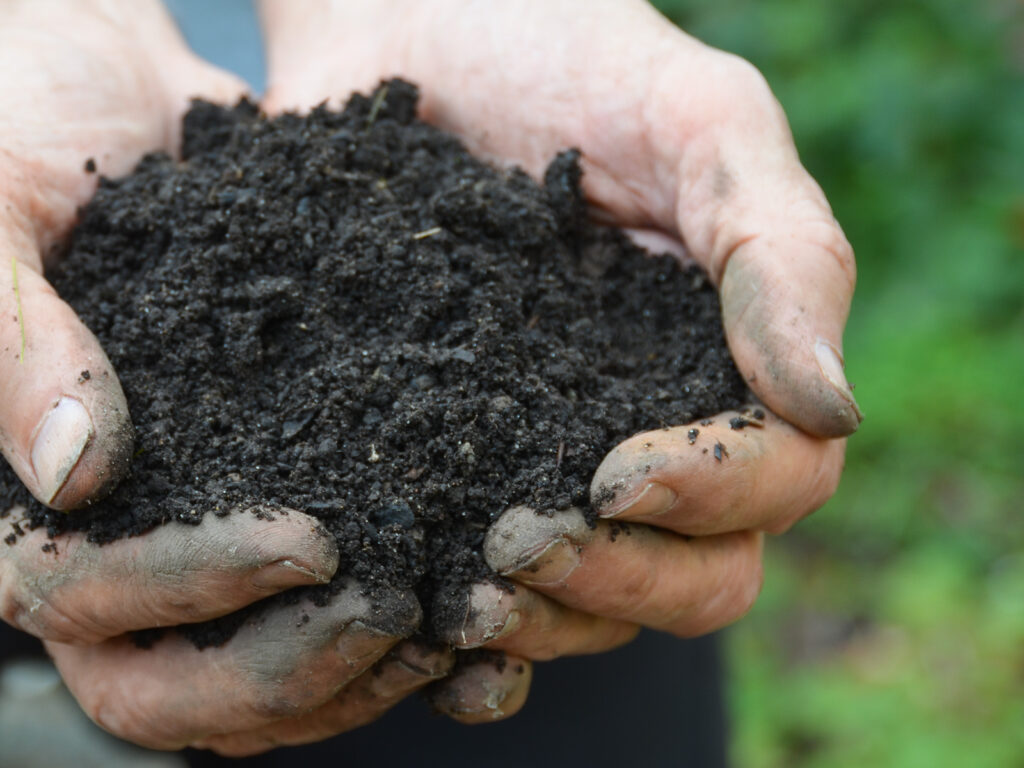
We don’t follow conventional gardening practices. What has become conventional in this country is doing whatever it takes to make yards “pretty” for people, but many of these practices are neither earth- nor habitat-friendly. We just nurture the soil and plant native plants.
Here are some of the gardening lessons we learned:
- Miscellaneous gardening tips (below)
- Care of the soil – This is fundamental!
- Getting and planting native plants
- Taking care of plants
Tools
We’ve acquired a varied set of tools over the years, often bought on the spur of the moment.
I finally realized that I always seemed to be looking for two particular tools. I knew they always worked, and they always felt comfortable in my hand. They both happened to be the same brand: Felco. I can’t remember buying them since we’ve had them from our earliest gardening days and have used them all these years.
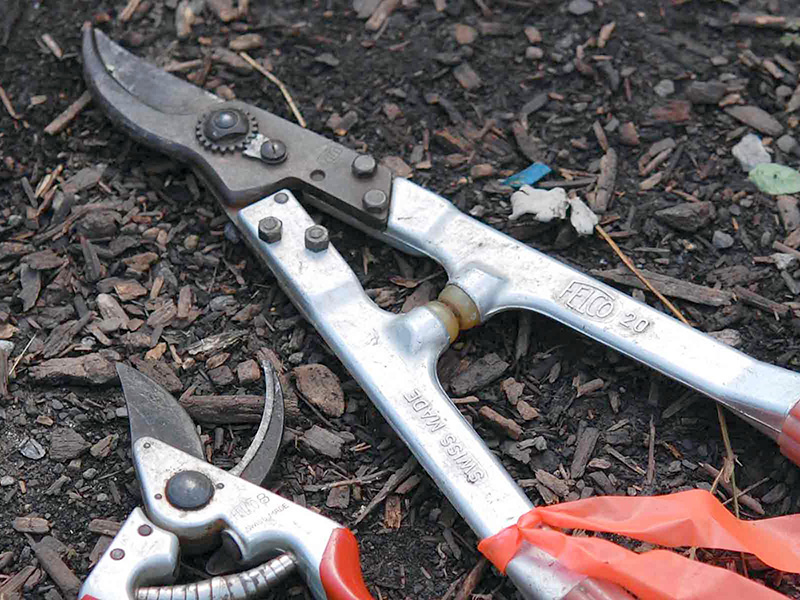
I thought it might be a good idea to get another pair since they sometimes get misplaced or both of us need to use them at the same time. I checked online and discovered why they work so well: they’re high-quality tools, and compared to other tools we’ve bought, quite expensive!
In the meantime, I’ve started being more careful with these tools and keeping track of where I put them. They’re cheaper per year than the less expensive tools I’ve sometimes bought, but they’re cheaper only if you don’t lose them! So even though they have red handles, I’ve added tagging tape to them to make they more noticeable if I happen to lay them down somewhere (which I’ve done …)
Special tools for special needs
Fortunately, we don’t have any tough-to-remove non-natives here in our CNY suburban yard. But when we were visiting our kids in North Carolina, we wanted to rid some cleared land of the invasive plants that had moved in. Some of the worst invasives had extensive root systems that couldn’t easily be removed by hand or by common tools.
That’s where the weed wrench came in. We used the Puller Bear brand. Just as in cooking, having the right tool for the job makes all the difference! In his work as a volunteer at our local nature center, John has used this same handy tool as they strive to rid the nature center’s land of the invasive shrubs that have moved in.
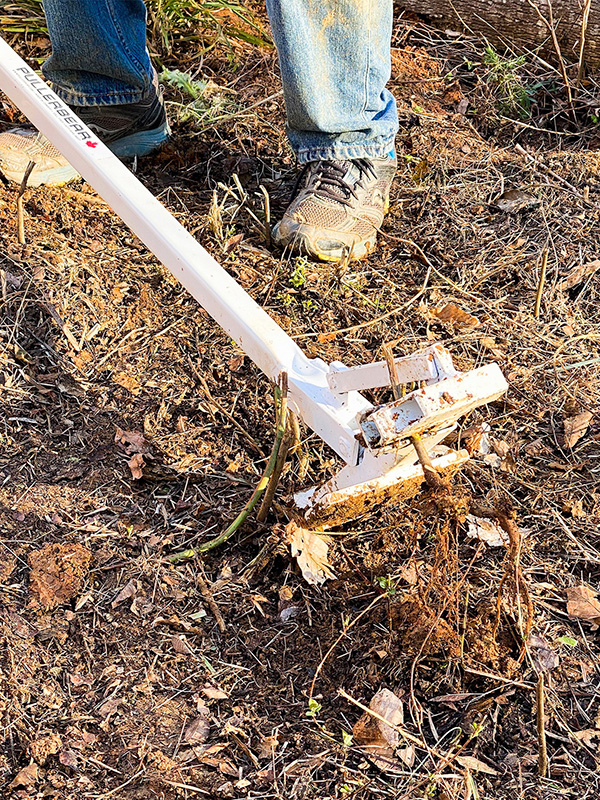
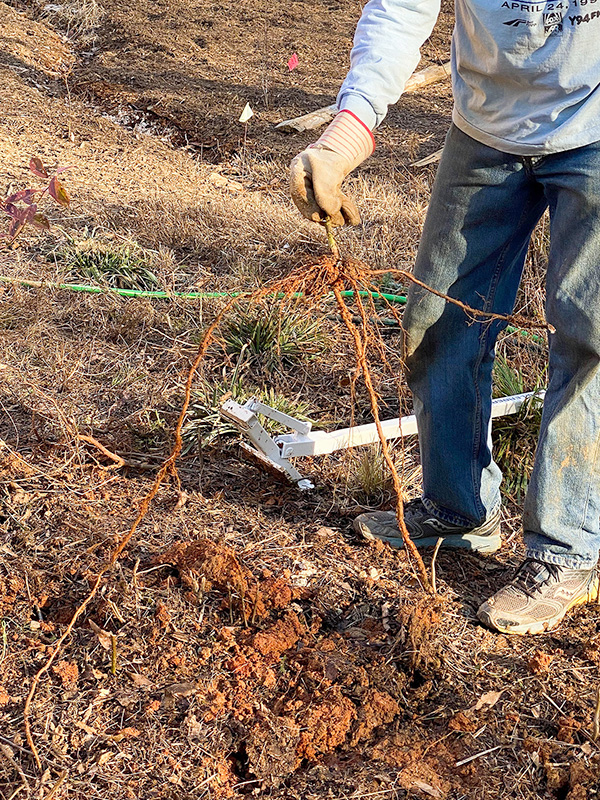
BUT NOT THESE!!
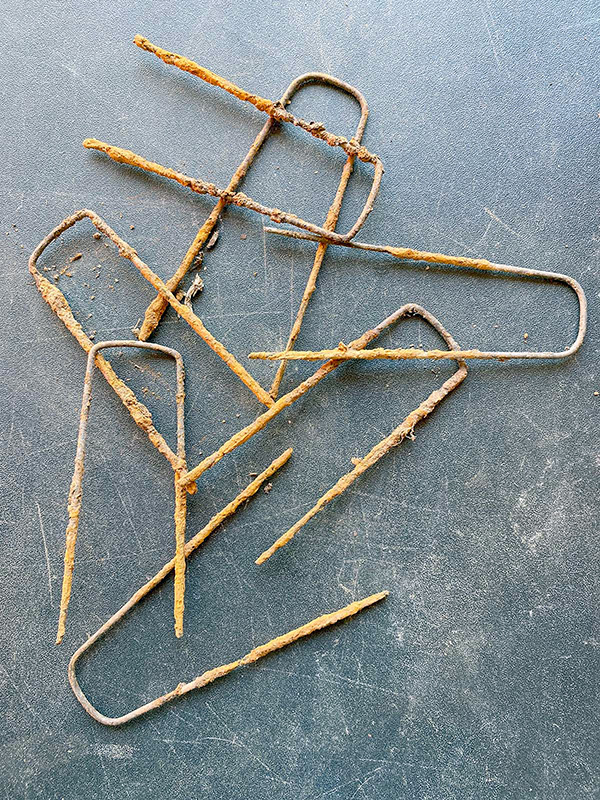
These soil staples seemed like a great idea. They easily anchored things in the ground. We had used some and our town had used them, too, when they “planted” sod after narrowing our road.
The sod soon died but then we started finding these staples when we were digging in the area. Nothing like putting your hands into soil and finding what amounts to a very large rusty nail! We’ve tried to locate and remove any remaining in our yard, but I’m sure there are still some there.
Something to avoid as useful as they may seem!
Tagging tape
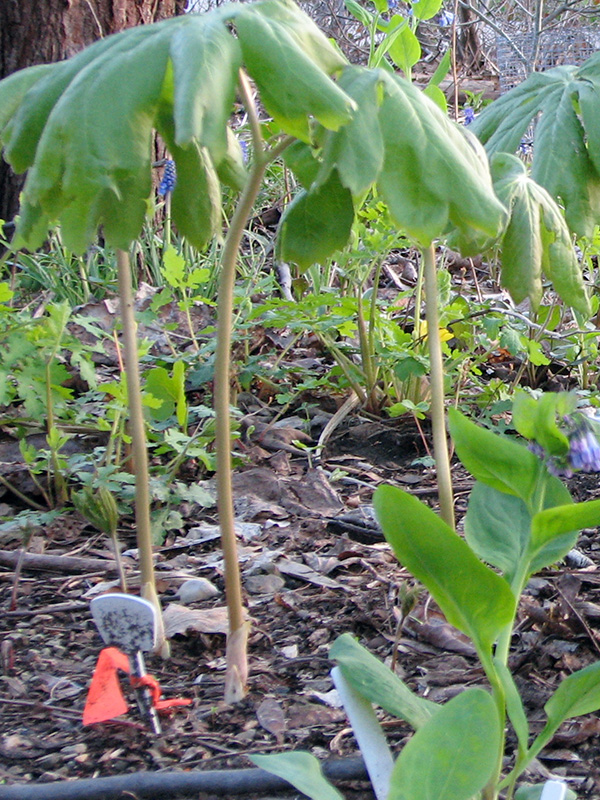
Actually, tagging tape is handy to have on hand for a number of purposes.
I sometimes tie tagging tape on plant markers of plants I’m monitoring for a community science project, plants I want to mark as important in some way, or young plants that might be overwhelmed by their neighbors.
To be extra noticeable, I sometimes tie some tape on taller sticks near plants.
Another thing to avoid!!
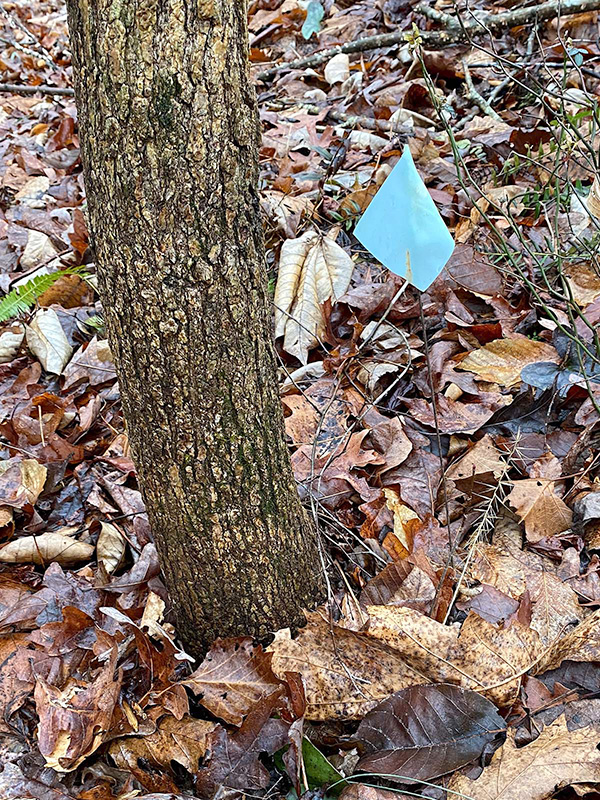
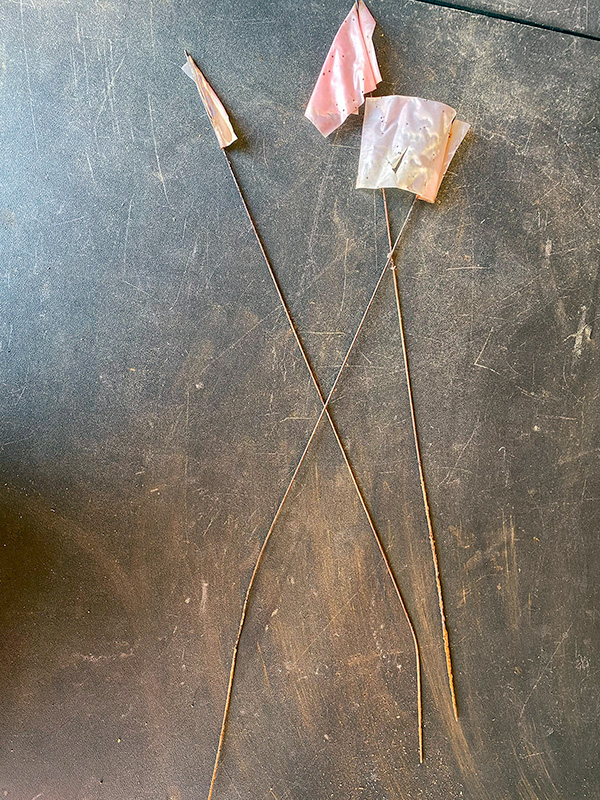
These thin metal flags seemed to be a really handy, cheap way to mark plants in our family’s North Carolina forest. They were indeed handy, BUT after a year or so, the thin plastic flags began to fall off, then we were left with an almost invisible thin metal piece sticking up ready to pierce someone’s hand or even an eye if they bent down. What’s more, they were rusty, making them even more dangerous.
We’ll never use these things again either!
Keeping track of plants
Too late I learned the value of plant markers! Obviously I’d remember what plant species I was planting. Of course, I’d remember where I put them. I’d surely remember what they look like when they came up next spring.
… And of course I didn’t!
I’m now on a campaign to label my plants (except the truly obvious, prolific, or inconsequential).
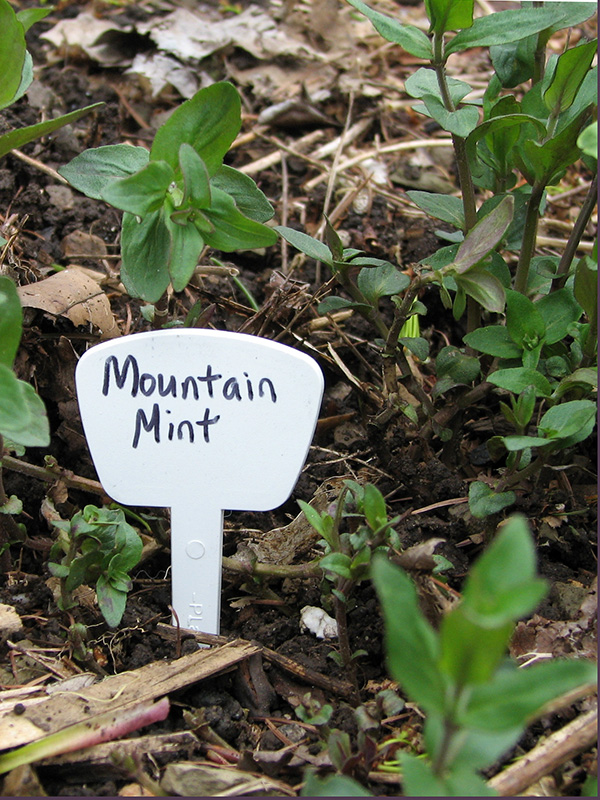
I’m also rewriting my original labels that have faded. And here’s a tip from Ellen of Amanda’s Garden: Write with soft lead pencil! I had used sharpie markers, assuming that they’d be permanent. It was so nice having clear dark print, but not so nice when they faded in a year or two. I ended up with a lot of white plastic markers with only a hint of the previous label. Pencil markings indeed last year after year though even these need to be refreshed eventually. And another advantage to using pencil is that the old names can be erased when you want to reuse the label.
Another way I’ve tried to keep track of plants is to take a photo, print it out in washed-out gray-scale, then label the plants right on the photo. I did this in early spring, since this is the best time to see plants coming up.
I liked this method, and it worked well when I first planted small plants, but when the plants grew larger and filled in, it wasn’t as useful.
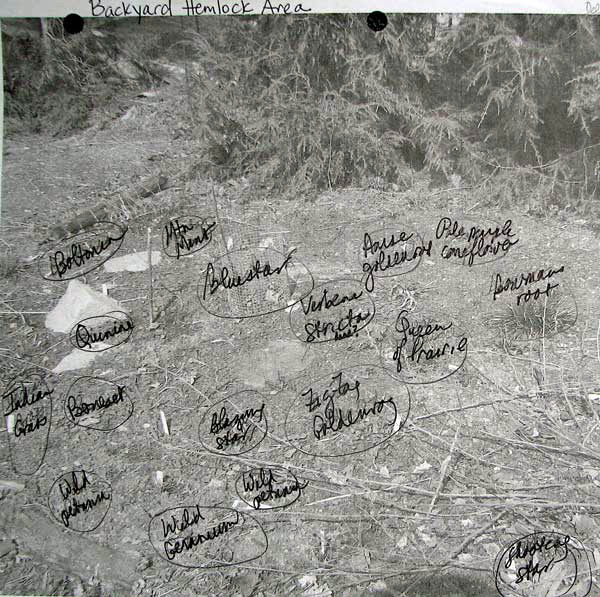
The 3 Rs in the habitat garden
We try to “reduce, reuse, and recycle” in our gardening pursuits, just as we do in our household life.
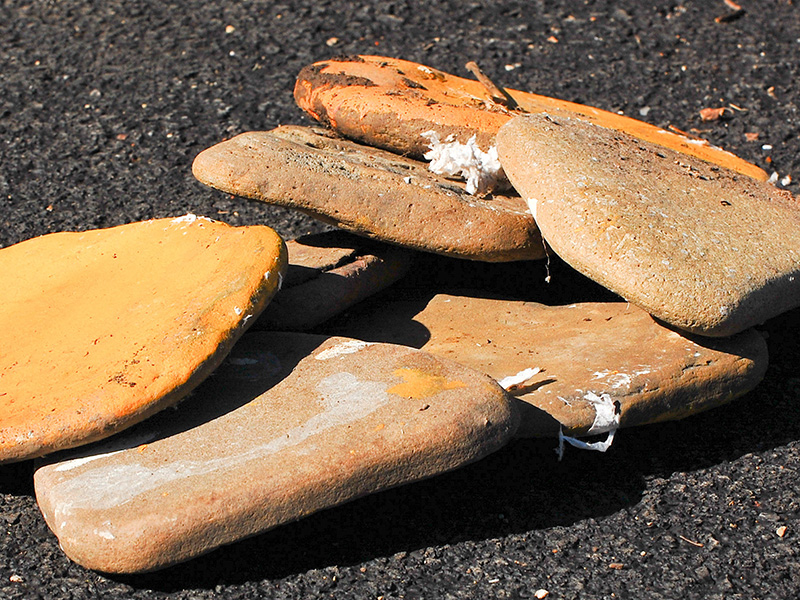
We came upon these stones put out to the curb as trash while we were walking back from getting our groceries. One side of each had been painted, so they probably had been used for some craft that was no longer wanted. But put out to the curb in the trash?
The thought of these stones being carted away by some fossil-fuel-using garbage truck, then dumped into some landfill forever was too much for me. I gathered them up and carted them home, getting even more exercise than I had expected when we started out on our walk.
I use these stones as stepping stones since they’re nice and flat. But I don’t need stepping stones as much as I need these not to be dumped in a landfill for eternity. Stones aren’t really a renewable resource, at least in any human time scale. We’ve carried our single-use, disposable culture way too far.
This is only one of several items that we’ve found in the trash that we could put to use in our garden, especially in our edible garden, such as discarded storm windows or screens for use in cold frames, and so on. Even an old broken clay pot that became a toad abode!
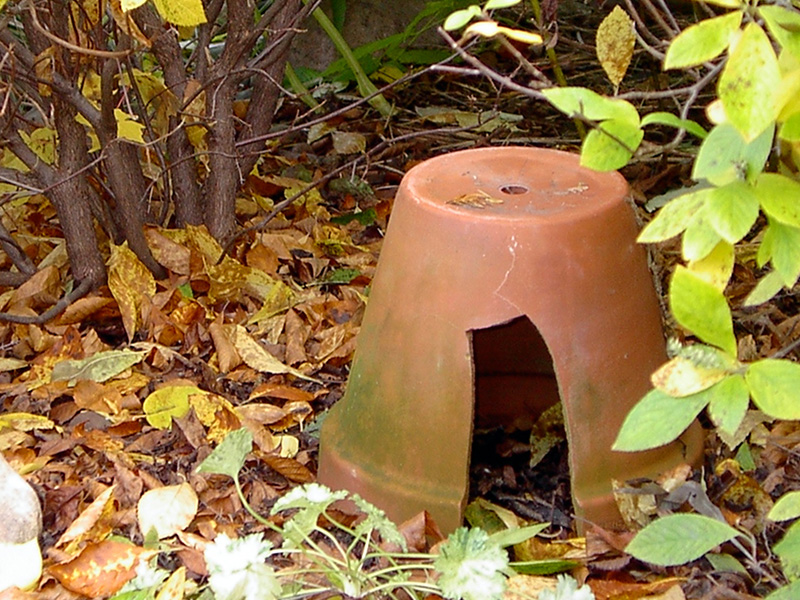
Resources
- Ecological Landscape Alliance:
- People’s Pharmacy:
- Joe Gardener:
- Plastic Nursery Pots – Greening Up The Darkest Side of Gardening
- Top ten tips to repurpose plastic pots (includes the list from the previous article)
- PennState Extension:
- Step-by-step guide to growing microgreens – Protect nature beyond your yard by growing some of your own food — even in winter!
Reflections
We come from the earth, we return to the earth, and in between we garden.
~ Anonymous
Treat the earth well. It was not given to you by your parents. It was loaned to you by your children.
~ A Kenyan Proverb
We abuse land because we regard it as a commodity belonging to us. When we see land as a community to which we belong, we may begin to use it with love and respect.
~ Aldo Leopold (1887-1948)
The ultimate test of a moral society is the kind of world that it leaves to its children.
~ Dietrich Bonhoeffer, German theologian, 1906-1945
Only a people serving an apprenticeship to nature can be trusted with machines.
~ George Herbert Read, (1893-1968)
In the words of ecologist Frank Egler, “Nature is not more complex than we think, but more complex than we can think.”
~ quoted by Dan Barber, The Third Plate, p. 88
Odd as I am sure it will appear to some, I can think of no better form of personal involvement in the cure of the environment that that of gardening. A person who is growing a garden, if he is growing it organically, is improving a piece of the world . He is producing something to eat, which makes him somewhat independent of the grocery business, but he is also enlarging, for himself, the meaning of food and the pleasure of eating.
~ Wendell Berry
